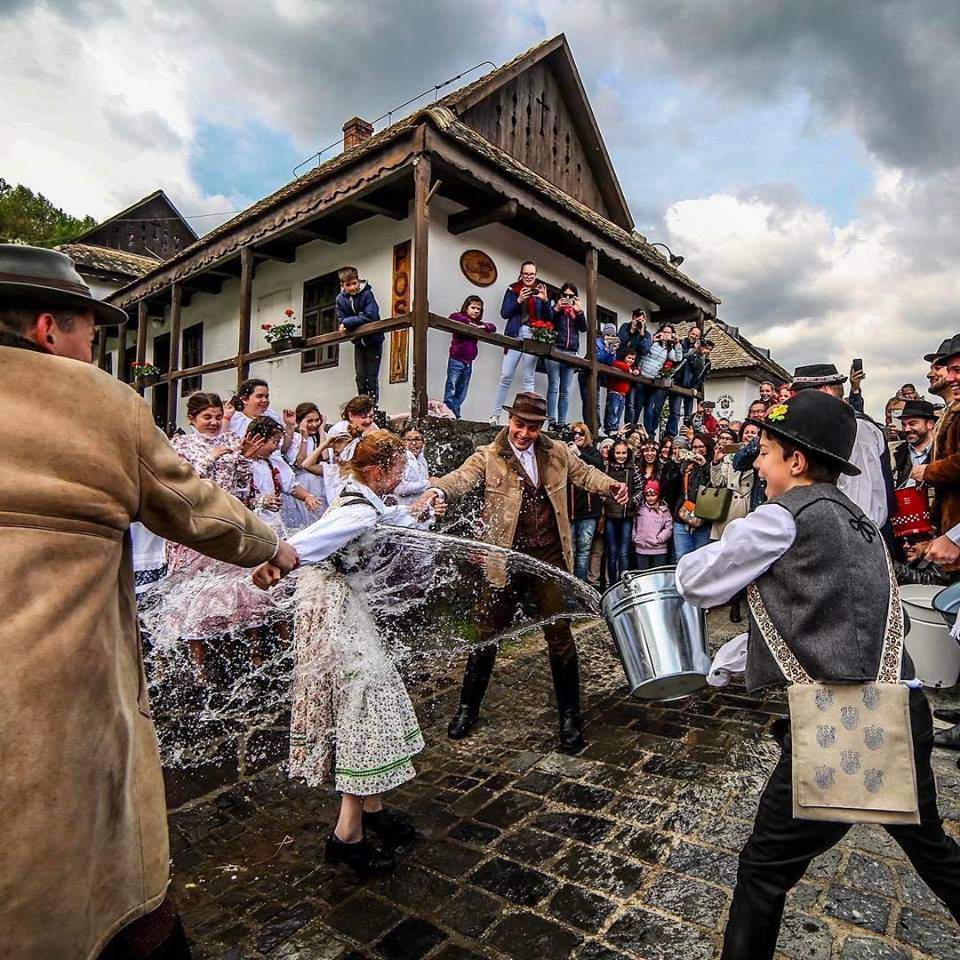Folk art is essential and unique in every culture, but we naturally have a soft spot for Hungarian folk art. Just think about the mesmerizingly colourful Matyó embroidery or the intricate laces. As most forms of folk art are considered Hungarikums today, you can see them at numerous places. The Culture Trip has collected the best ones, including museums and a real-life introduction to the origins of these beauties.
Budapest Festival of Folk Arts
The Budapest Festival of Folk Arts is organised every year at the Buda Castle, usually around August 20, the day commemorating the Hungarian State Founding. This year it takes place between the 17th and 20th of August. At this festival, you can get to know Hungarian folk art in the form of a market, where artists display their work and set up workshops to teach those interested. The most popular activity at these tents is the egg painting, which is a well-established Hungarian Easter tradition.
Hungarian folk dance and music are also represented at the festival, make sure to check these performances out too.
If you have not had a chance to get to know Hungarian cuisine by this time, you can try the best Hungarian food and also the pálinka.
https://www.facebook.com/mestersegekunnepe/photos/a.208823612494576.50006.203681063008831/1516160368427554/?type=3&theater
The Museum of Applied Hungarian Folk Art
It is worth checking out this museum’s collection from time to time again, as their collection is constantly refreshed with new creations representing the latest methods and trends in folk art. What will you find here? The widely known and peculiar Busójárás masks for instance, so if you miss the carnival in February, you will still get the hang of this Hungarian tradition. In addition, the museum’s collection includes different types of embroideries, laces and pottery, along with the characteristic Hungarian furniture.
The Museum of Ethnography
If you are already in the vicinity, visiting the Hungarian Parliament, then why not check out the Museum of Ethnography too? Though the museum is closed for renovation until 2020, you can still visit their archives and library.
Once it is open again, you can explore temporary or permanent exhibitions, like
the “Traditional Culture of the Hungarians”, which will guide you through the life of Hungarian peasantry and the trends in folk art from the late 1700s until the First World War.
Folk heritage is represented by laces, embroidery, jewellery, furniture and folk costumes. If you wish to have a first-hand experience in the creation process, you can try yourself at the interactive workstations, where you will get a deeper understanding of what these crafts meant for the given periods.
Skanzen Open Air Museum at Szentendre
Szentendre is located very close to Budapest and is worth a visit in itself too, not just for the open air museum next to it. The skanzen was established on 113 acres of land, so you can emerge yourself fully in the past while exploring the different areas which range all the way from a northern Hungarian village to a market town on the Great Hungarian plain in their natural environments. If you plan your trip well, you can participate in several events or activities created with the purpose of introducing Hungarian folk arts and crafts in a way that you will surely remember for a long time.
https://www.facebook.com/SKANZEN.HU/photos/a.1502180056481466.1073741899.111061672259985/1522425667790238/?type=3&theater
Bereg County
If you plan on taking a road trip across Hungary in order to explore the country and the ways of living here more in depth, then we suggest heading to northeastern Hungary, more exactly to the Bereg region. Why?
Here you will find dozens of ages long churches that were decorated with traditional paintings, and you also get to meet the local craftsmen selling their work along the road in towns and villages.
The Culture Trip highlights Tákos, a small village, where the must-see pieces include the Calvinist Church with its painted ceiling and carved pulpit and the Tákos Provincial House where you can buy local crafts and yummies.

http://beregihirek.hu
Hollókő
This little village in northern Hungary is a UNESCO World Heritage Site and a working village at the same time. If you wish to see traditionally decorated furniture, then head to the Hollókő Village Museum, or for a quick lesson in hand weaving to the former weaving houses. Of course, if you want to leave with a locally hand-crafted piece of folk art, you can buy some from the small shops.
The Culture Trip recommends visiting during Easter time, to get to know the traditional Hungarian Easter celebrations like the egg painting and the ‘watering’ of girls and women.

Photo: www.facebook.com/IloveHolloko
featured image: https://www.facebook.com/SKANZEN.HU



